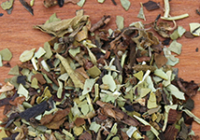Understanding Histamine Intolerance
By Dr. Martin Hart, DC, NASM-CES

Do you have sensitivities and allergies that you and your doctor can’t seem to figure out? Food reactions that come and go? One day a strawberry makes your lips swell and the next it’s fine. Will the wrong thing touching your skin create hives and rashes for days? Maybe it is worse than that; maybe it’s not just rashes, but your reactions include heart palpitations, lightheadedness, intense acid reflux, and intense bladder pains. If this is starting to sound like you, then hopefully I can shed some light on your situation by explaining Histamine Intolerance (HIT).
You may know a little about histamine and its connection to seasonal allergies, but do you know the other roles it plays in the human body? Histamine is a compound made from histadine, an amino acid found in food. A short list of its functions includes:
- Vasodilation (opening blood vessels and regulating blood pressure)
- Vascular hyperpermeability (makes blood vessels leaky to help transport)
- Glandular secretions (mucus, etc.)
- Regulates the sleep-wake cycle
- Releases stomach acid for digestion
- Stimulates neurons
- Regulates appetite
- Smooth muscle (in the organs) contraction
- Sexual function
- Pain perception
- Inflammation and immune function
- Helps move mast cells for immune function
- Neurotransmitter (serotonin, dopamine, norepinephrine, etc.) regulation
Looking at this list, you can see that histamine has many jobs throughout the body. This makes it evident that when histamine goes haywire, the effects can be intense and happen all over the body. This is known as Histamine Intolerance or HIT. HIT is when the body accumulates an excessive amount of histamine, creating a sort of toxicity. In excess, each of the roles it plays becomes its own symptom. If you don’t know that these symptoms are coming from excess histamine, they can seem random. Your load of histamine will determine if you react or not and how intensely you react. One day a seemingly healthy avocado might make your face swell and leave you lightheaded, while two days later it might leave you with just a little extra mucus in your throat. This is because your histamine load in the body has shifted. Symptoms of increased histamine load include swelling, inflammation, hives, rashes, flushing, welts, food reactions, increased pain, heart palpitations, sexual dysfunction, loose stools, bloating, poor sleep, feeling wired or overstimulated, anger, irritability, neuro-psychiatric symptoms, increased mucus production, congestion, low blood pressure, racing heartbeat, and any symptom related to the areas regulated by histamine receptors.
| Histamine Receptors
Histamine works on our cells through receptors. Histamine locks into these receptors to do its job. There are 4 types of histamine receptors throughout the body called H1, H2, H3, and H4 (not creative but easy to remember). They are in areas such as blood vessels, nerves, the brain, digestive tract, gonads, skin, and lungs. Anti-histamine medications have varying effects or make you drowsy depending on which receptor they block. |
Where did all this histamine come from, you may be asking? As mentioned above, some of the histamine in the body comes from the foods we eat. Certain foods, such as pickled or fermented products, smoked or processed meats, and leftovers contain high amounts of histamine. A diet full of these foods can create HIT; but more often than not, it needs another catalyst. We need certain enzymes and probiotics to help us breakdown histamine in the body. These enzymes include diamine oxidase (DAO), histamine n-methyl transferase (HNMT), and monoamine oxidase-B (MAO-B). They function to clear and process histamine through various means. You can have a genetic polymorphism (meaning a mutation) that lowers your ability to make these enzymes or you can have functional issues (such as nutritional deficiencies or infections) that decrease the ability of the enzymes to work well.
| Co-Factors for DAO, HNMT, and MAOB
● Copper ● Vitamin C ● Methyl donors ● B-vitamins (especially B-6) ● Iron ● Magnesium |
Our microbiome, the good bacteria in our gut, also works to break down histamine. The strains Bifidobacterium infantis, Bifidobacterium longum, and Bifidiobacterium breve have been shown to lower histamine. Other strains are also involved, such as Lactobacillus rhamnosus; but these first listed are the primary three strains that support our good bugs as they work for us. A person who lacks these critters will find it is more difficult to break down histamine.
Whereas in our microbiome the absence of good bacteria can lead to excess histamine, some pathogens directly promote excess histamine by their presence. A major source includes SIBO, small intestine bacterial overgrowth. Our small intestine is not meant to host as much bacteria as our colons, so when it migrates up north or we become infected with bacteria in that region, we end up with gas, bloating, various other symptoms, but especially excess histamine. Other infections in the gut, such as parasites, can provoke increased histamine, as it is one of the main ways our immune systems fight these pathogens. Any factor that triggers a chronic immune response or inflammatory response, such as mold toxicity, can also trigger chronic histamine release leading to Histamine Intolerance as well.
Any good practitioner learns to become a good detective in working with issues such as Histamine Intolerance. Solving HIT requires removing the root cause, such as SIBO or parasites, improving the body’s ability to process histamine, and providing immediate support to relieve the suffering of the patient. The detective work becomes important with HIT because many patients dealing with this will react to treatments if the doctor guesses at how best to help. Instead the doctor needs to be specific and work with the patient’s biochemical individuality to create the best solutions. At the Biologix Center for Optimum Health, we focus on frequency matched remedies using Bio-Spectral Emissions Sequencing, tailoring advanced alternative medicine, and innovative healthcare to each case for the best possible outcome.
For those at home who believe themselves to be suffering from HIT, I recommend beginning by eliminating the largest sources of excess histamine from your diet as well as histamine liberators, if not well tolerated. Start eating foods that are anti-histamine and anti-inflammatory, work with an intelligent practitioner to find the root cause of your HIT, and support your body’s own healing ability.
Living with Histamine Intolerance can be overwhelming. The experience can be equated to walking through a live minefield, never knowing when you are going to have a reaction. Please know that there is hope for you out there. Learning about Histamine Intolerance and working with a qualified practitioner can offer you a path to health and healing. Don’t give up, don’t give in, and keep looking for the answers you seek.
To learn more about Histamine Intolerance, join us live with Dr. Hart for our next BioBites session, Tuesday, July 6th at 12pm ET on Zoom. To register for this FREE event, visit bit.ly/july6biobites












This Post Has 0 Comments